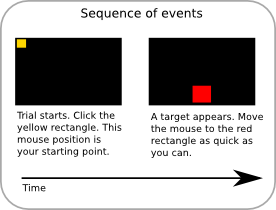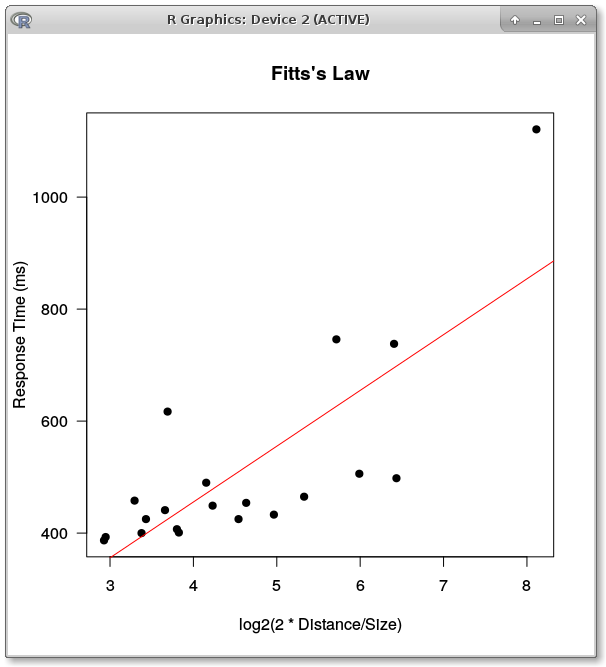Introduction
Fitts’s Law refers to a well known and important psychological phenomenon. In essence, it is about the speed with which you can point or reach for objects. Fitt’s Law states that the speed with which you can point or reach for an object depends on its distance and its size.
It is not difficult to understand. You probably know from your own daily-life experience that it is more difficult to grasp a paperclip (small object) than a tennis ball (normal size). On top of that, how difficult this is also depends a bit on how far away they are (it is still easier to grasp a paperclip close by than a tennis ball far away). Fitts’s Law is exactly about predicting the difficulty of a movement based on the distance and size of an object.
| Fitt’s Law is important in part because it has direct applications, for example in the design of user interfaces. |
| When writing about Fitts’s Law, make sure you check the spelling and punctuation of Fitts’s Law. |

Do it yourself
It is easy to experience Fitts’s Law yourself. In the demonstration, you will use the mouse to point an object on screen. On each trial, you will see a small yellow rectangle in the top left corner. This is your starting point. You need to click it. Then, you will see a red rectangle. You need to move the mouse to the red rectangle as soon as possible (no need to click it).
Data analysis
This is only necessary if you want to carry out the data analysis offline yourself. It is not necessary to understand the basic phenomenon. Basically, it allows you to create the same scatter plot as you see when finishing the demo.
| For this section, you will need the file fitts-analysis.r. |
The computer will save the time it takes you to click the red rectangle. The R code helps you to plot your performance as a function of size and distance.
It is easy to plot your data. Just source fitts-analysis.r. If you have your own data file, make sure you change the file fitts.r accordingly (first line contains the name of the used data file). An example data plot is shown below.

Ideas for home work
-
Do the experiment again, but change the code to have 200 trials.
-
Who was Fitts?
-
Why is Fitts’s Law called a Law? What is a Law? Do you think that "Law" should be written with a capital? What is the convention (do some research, check the spelling of published papers on this topic).
-
How is Fitts’s Law relevant for applied science? Try to find an example of how Fitts’s Law is relevant in your own daily life
Reading material
-
Fitts, P.M. (1954). The information capacity of the human motor system in controlling the amplitude of movement. Journal of Experimental Psychology, 47, 381-391. (This paper was reprinted in 1992 in the Journal of Experimental Psychology: General, 121(3), 262-269, 1992; if you have access to a University library, you can download this classic paper as PDF).
